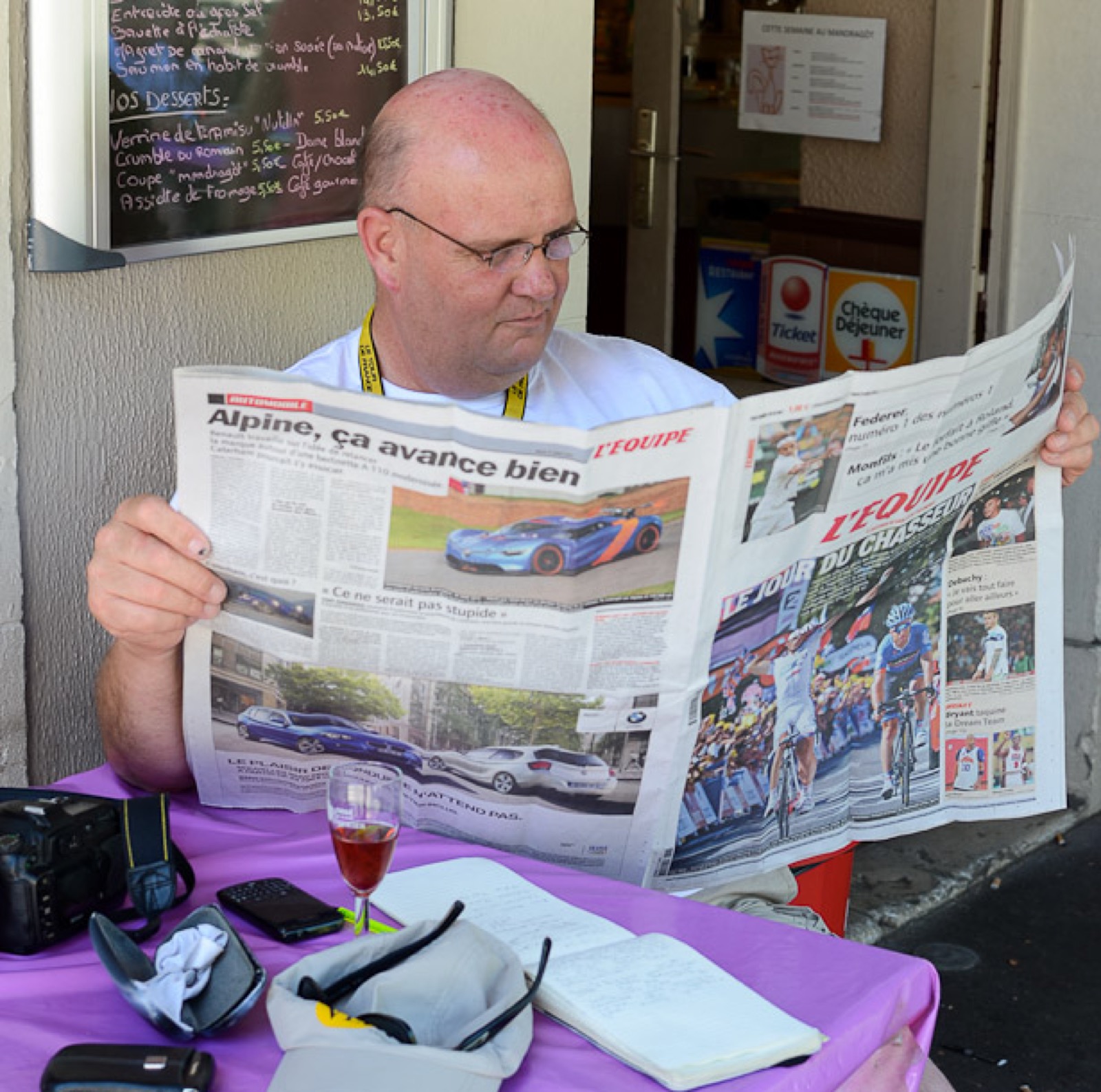SRAM Force Groupset; it’s been tried before – trying to grab a slice of that top-end equipment pie from those greedy Campagnolo and Shimano dudes who want to keep gobbling it all up between them.
In the 70’s a French union of Stronglight, Simplex and Mafac failed, despite Bernard Thevenet winning two Tours on the kit. Shimano’s Japanese rivals Sugino and Sun Tour tried to get in on the act and despite the neat Sun Tour groupset being ridden by Jan Raas-managed Dutch pro teams in the 80’s, it never made the breakthrough.
Mavic had Toni Rominger, Greg Lemond and Chris Boardman riding their set (complete with huge cranks) into the 90’s but again it never gained mass acceptance.
Enter SRAM, not exactly the new kids on the block — their “grip-shift” gears are a legend in mountain bike circles — but new to the rarefied air of the UCI Pro Tour listings where the Saunier Duval team is now kitted-out with SRAM’s new top-end groupset – “Force” (Yeah, yeah, we know — the Force is strong in this one!).
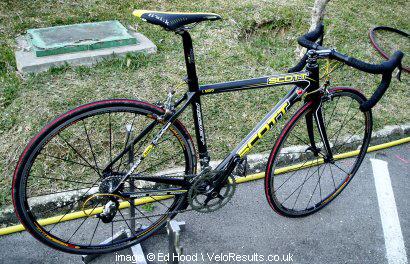
We caught up with Charles Becker and Ron Ritzler of SRAM at the Saunier Duval team launch in Estepona as they hovered around the mechanics like proud new-fathers around the mid-wife.
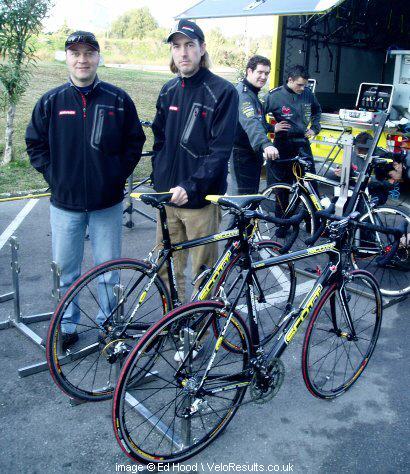
Shifters
Perhaps the most striking innovation on the groupset is the neat shifter (combined brake/gear lever). Unlike Campagnolo, whose ‘Mickey Mouse ears” up-shift tabs spoil otherwise elegant aesthetics and Shimano who went down the double-articulation on the brake lever route — disconcerting when you are out of the saddle on the brake hoods and the lever moves with your hand — SRAM appear to have got it just right.
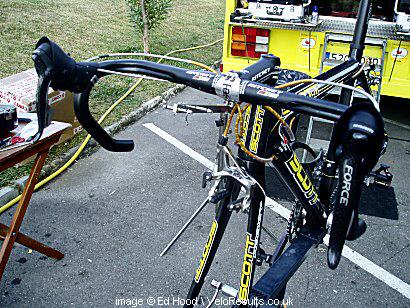
A secondary lever, a la Campag and Shimano is situated behind the main brake lever, which is in carbon, also per Campag [Shimano have steadfastly resisted the carbon route so far.] There the similarities end because the SRAM lever, which is made from electro-painted wonder-material, magnesium, moves the chain up AND down the cassette; a firm inward push take you through up to a three cog down-shift whilst a lighter touch in the same direction clicks you down one cog at a time.
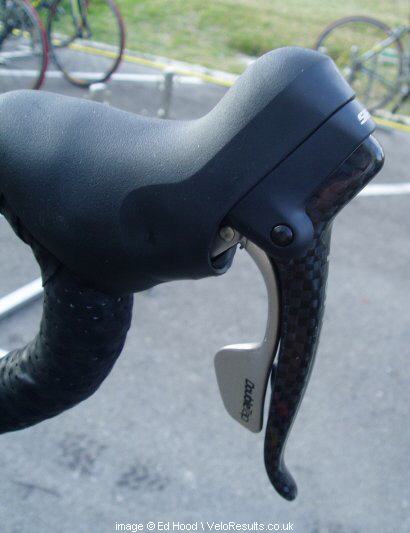
If it sounds fiddly, it isn’t, in practice it works beautifully and I found myself thinking; “that would be great on my Giant.”: Thank Brian Jordan from SRAM’s Advanced Development Group in Chicago; it was his idea and a great one at that.
Brakes
The brakes are in forged alloy with titanium bolts and sport the currently fashionable additional strut, a la 70’s Dura Ace on the outside calliper arm.
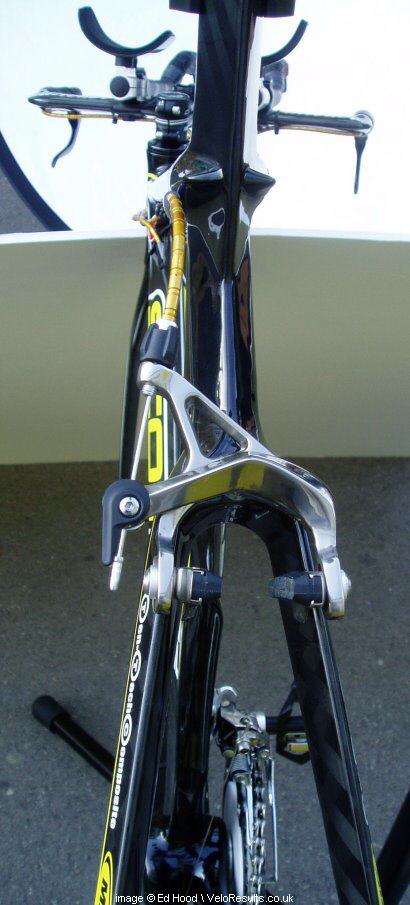
Dual pivots give mega stopping power front and back — unlike Campag who have eschewed twin pivots for rear braking as too powerful. Ron isn’t a fan of internal cable routing, preferring to keep things simple and accessible; and if you are going to err when fitting gear cables — a little too long is always better than a little too short.
Front Mech
The front changer is — well – a front changer, [until Campag or Shimano eventually release their electric options to the buying-pubic it’s hard to get excited]… it’s like Ron says; “you just make it work and keep it of the way.”
A triple option isn’t available, the new drive towards compact chainsets has all but put paid to the triple for top-end racing machines.
Rear Mech
The rear mech is an exotic mix of aluminium, magnesium and carbon, it benefits from SRAM’s years of experience in the inhospitable world of mountain biking with “one to one articulation” — in other words, the distance you move the gear lever is the distance the mech travels; simple and making for very positive shifts.
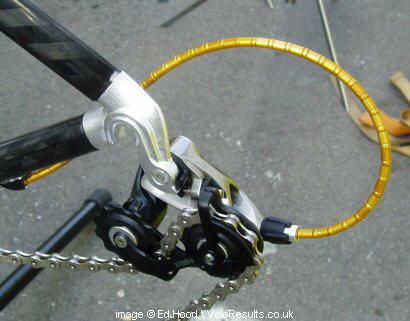
Gear cables are Teflon-coated to keep those shifts smooth.
Cassette
The cassette is currently available in steel but something lighter isn’t far away, sprockets start at 11 and go to 26; with 34/53 compact chain rings available to cover most bases.
Chainset
Talk of chain rings takes us to the heart of the transmission — the chainset. SRAM bought specialist, top-end manufacturer Truvativ, and it’s that company’s expertise which has resulted in the GXP chainset.
The axle is hollow and of large diameter, it’s bonded into the right hand crank. It’s a sliding fit through the over-size bearings which sit out-board of the bracket shell a la Shimano – this gives a very stiff unit when the left hand crank is secured into the axle with an 8 mm self-extracting bolt.
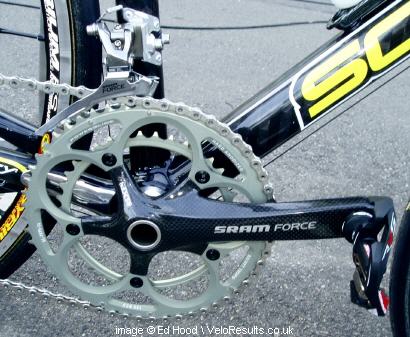
The cranks are – almost inevitably now in pro racing — carbon, up to 175 mm. That is – 177.5 and 180 are in the pipeline. Where they differ from some manufacturers is that the alloy inserts to take the pedal axles and crank fixings have the crank arms cold moulded around them — the cranks are not formed then drilled and inserts added; a process which SRAM think is not as sound as their method.
Cranks and chain rings will be available in compact options down to 34 and 36 teeth; larger, time trial specific rings will also be coming along.
So how has the groupset been received?
Ron, now in his eleventh year with SRAM, explained;
“Whilst this is our first foray into the Pro Tour we sponsored two Continental squads last year, Orbea in Spain and Kodak Gallery/Sierra Nevada in the US. Feedback from both of those squads was very positive and it’s been the same here with Scott.”
How about the weight aspect, Ron?
“The groupset is lighter than Dura Ace and Gilberto Simoni’s Addict is coming in at 6.2 kilograms, that’s below the UCI minimum, so there are no problems there.”
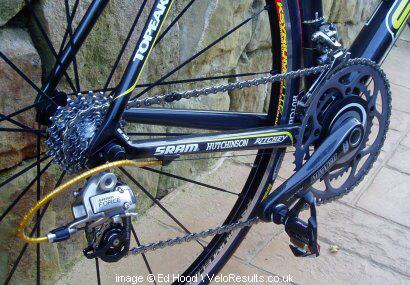
So who made the first approach?
“We have a great relationship with Scott and I guess it was a mutual process. For our part we were excited at the prospect of our components being mounted on the new Scott Addict — the lightest bike in the pro peloton. This is the biggest development we’ve ever under taken, there were 50 people involved in it, including eight German engineers from the bike component company Sachs, which SRAM also owns.
“Given the investment, we wanted to work with a company we knew and which had mutual respect for us. We’ve had a number of approaches from other squads but we preferred to stick with one team — Saunier, where we can have support technicians with the team all the time as it competes round Europe.”
Then it was time to fish in his pocket for a special carbon spacer for a mechanic — there are those new babies to look after, remember!
VeloVeritas would like to thank Charles and Ron for their generous time, and we look forward to seeing the equipment perform throughout the season.


